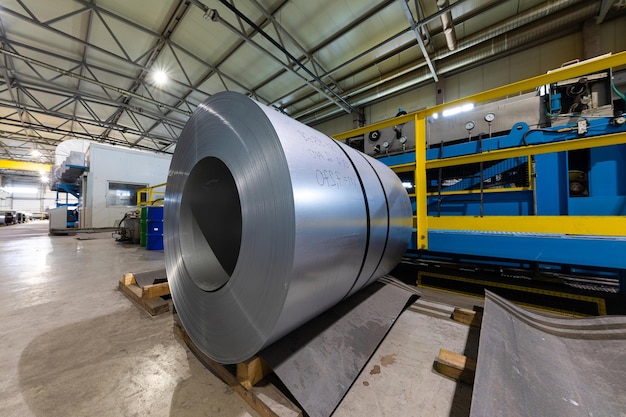Steel rolling mills are designed to manufacture various steel products such as rolls, wire coils, bars, sheets, angles, channels, and more. The configuration of a rolling mill depends mainly on the specific product being produced. For example, manufacturing rebars requires a rebar mill; wire rods call for a wire rod mill; hot steel strips demand a hot strip mill, and so forth.
Finishing Assembly: Essential Machines
Among the most crucial areas of a rolling mill is the finishing assembly, where the final shaping, sizing, and cutting occur. Several specialized machines are involved in this process, each with a distinct function.
Shearing Machines
Shearing machines are used to cut steel products to desired lengths and sizes. There are various types of shearing machines, each suited to a specific application:
- Flying Shear
- Designed for high-speed cutting, flying shears can shear bars traveling at speeds of up to 18 meters per second.
- Billet Shearing Machine
- Used for shearing high-speed billets, operating at similar speeds to flying shears.
- Scrap Shearing Machine
- Suitable for cutting discarded steel components like rails, channels, beams, angles, and rounds in cold conditions.
- End-Cutting Shearing Machine
- Positioned near the roughing stand, these machines are used to cut the ends of steel angles.
- Snap Shear
- Pneumatically powered and used during material transfer, these are ideal for rapid cutting in various industrial settings.
- Rotary Shear
- Utilized for the automatic cutting of split hot ends.
- Alligator Shear
- Features a hinged jaw powered by a flywheel, used for cutting pipes, rebars, angle irons, and I-beams.
The Pinch Roll Machine
Another vital piece of equipment in the finishing assembly is the pinch roll machine. This machine plays a critical role in rebar mills by guiding the rebar through the dividing shear. Positioned between the finishing stand and the shear machine, the pinch roll ensures consistent movement and positioning of the product.
Each pinch roll unit includes rolls mounted on chocks within a fabricated frame and is driven by electric motors. The size and specifications of the rolls can vary based on the final product and mill requirements. These machines also come equipped with cantilevers that allow pneumatic adjustment of the top roll, providing the flexibility needed for different processing conditions.
Supporting Equipment
The finishing process often requires more than just shears and pinch rolls. A tail breaker machine, for example, is commonly used to reduce product speed or assist in cutting operations, helping to maintain order and safety in the rolling line.
Conclusion
Choosing the right machinery is crucial for a successful and efficient rolling mill operation. Whether it’s a pinch roll, shear machine, or tail breaker, each component plays a specific role in achieving precision, quality, and production efficiency. Working with a reliable turnkey solutions provider ensures you get well-designed and high-performance equipment tailored to your manufacturing needs—helping you deliver final products that meet rigorous industry standards.





Comments